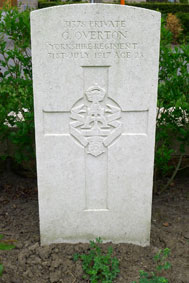 |
Yorkshire
Regiment War Graves, - Duhallow A D S Cemetery (Belgium, West Vlaanderen) |
 |
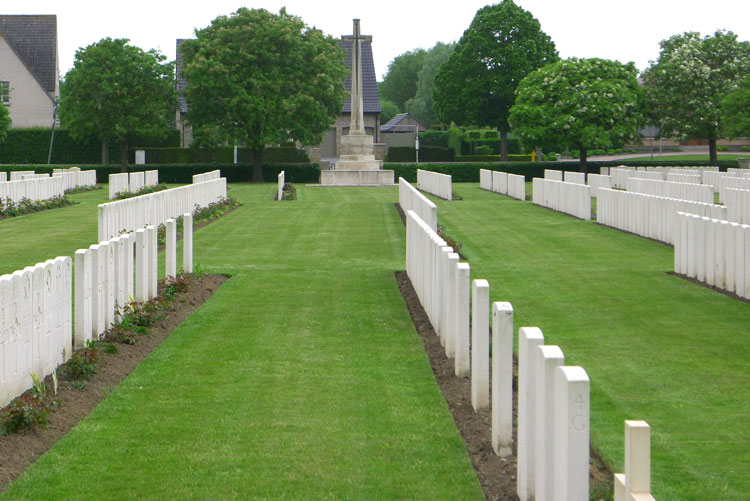 Duhallow A D S Cemetery (1)
Duhallow A D S Cemetery (1)
Photo : Chris Weekes (<weebex12@hotmail.com>).
Duhallow Advanced Dressing Station, believed to have been named after a Southern Irish Hunt, was a medical post 1.6 kilometres north of Ypres (now Ieper). The cemetery was begun in July 1917, and in October and November 1918 it was used by the 11th, 36th and 44th Casualty Clearing Stations.
The cemetery contains many graves of the artillery and engineers. 41 men of the 13th Company Labour Corps, killed when a German aircraft dropped a bomb on an ammunition truck in January 1918, are buried in Plot II.
After the Armistice, the cemetery was enlarged when graves were brought into this cemetery from isolated sites and a number of small cemeteries on the battlefields around Ypres. Special memorials commemorate a number of casualties known to have been buried in two of these cemeteries, Malakoff Farm Cemetery, Brielen, and Fusilier Wood Cemetery, Hollebeke, whose graves were destroyed by shellfire.
There are now 1,544 Commonwealth casualties of the First World War buried or commemorated in this cemetery, 231 of the burials unidentified. There are also 57 war graves of other nationalities, mostly German, and one Commonwealth burial of the Second World War, which dates from the Allied withdrawal ahead of the German advance of May 1940.
Amongst the graves is that of one soldier who served with the Yorkshire Regiment.
We are extremely grateful to Chris Weekes (<weebex12@hotmail.com>) who has generously provided the photographs on this page.
Click on the thumbnail image of a headstone for a larger version of the photo which opens in a new window.
| Private George Overton. 31378. The Yorkshire Regiment, transferred to 16th Labour Bn. transf. to (12923) 22nd Coy. Labour Corps. Son of William and Elizabeth Overton, of 93, Lumley Rd., Skegness, Lincs. Died 31 July 1917. Aged 28. Born Skegness (Lincs), Enlisted Ripon, Resided Skegness. (SDGW shows Private Overton as having previously served as 25127 in the West Yorks Regt. This is not borne out by the Medal Rolls Index card). Christopher Noble (<cjnoble01@virginmedia.com>) has forwarded an item from the Boston Guardian of 18 August 1917 which provides an account of Private Overton's death. Select the above link to read this account. |
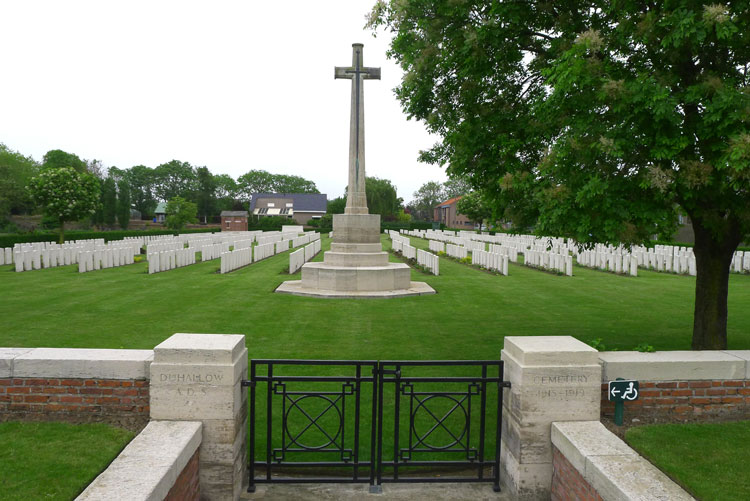 Duhallow A D S Cemetery (2)
Duhallow A D S Cemetery (2)
Photo : Chris Weekes (<weebex12@hotmail.com>).
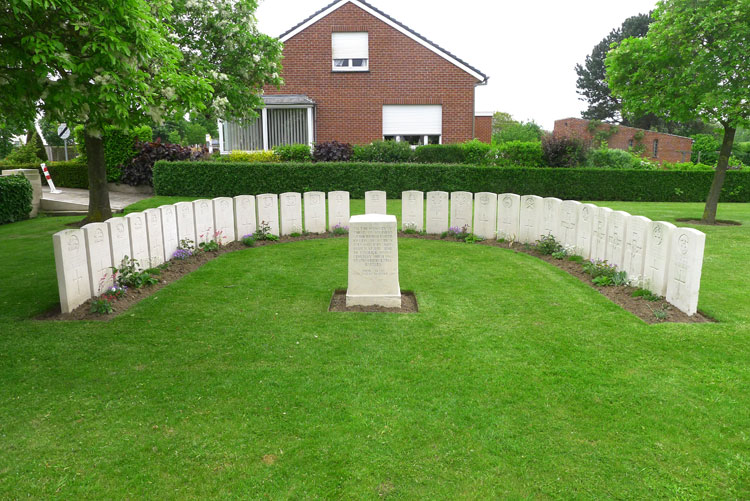 Duhallow A D S Cemetery (3)
Duhallow A D S Cemetery (3)
The Headstones for 29 soldiers originally buried in Fusilier Wood Cemetery.
The cemetery was destroyed in later battles.
Photo : Chris Weekes (<weebex12@hotmail.com>).
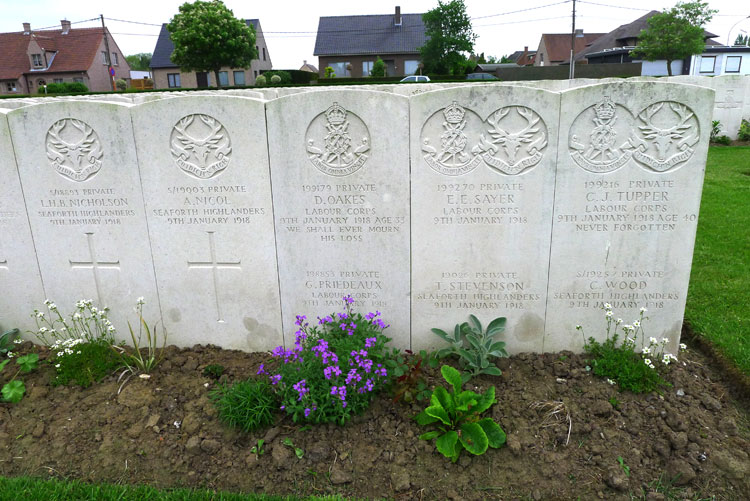 Duhallow A D S Cemetery (4)
Duhallow A D S Cemetery (4)
Headstones for those killed when an ammunition truck was bombed.
Photo : Chris Weekes (<weebex12@hotmail.com>).
The "Boston Guardian", 18th of August 1917:-
"Pte. G. Overton Of Skegness.
News has arrived that Pte. George Overton, of the 22nd Labour Company, of
Skegness, was killed in action on July 31st. The previous week the parents,
Mr. and Mrs. W. Overton, of 93, Lumley-road, Skegness, received a communication
from the Captain informing them their son had been killed. Later the news
was confirmed by Lieut. Newman, the deceased's platoon commander. The following
is an extract from Lieut. Newman's letter:
"We left our camp at midnight on July 31st, a small party of 30 strong,
and marched to our position in front of a well-known (ruin) which has been
in ruins two-and-a-half years, smashed by the Huns, and arrived there at 4.30
a.m. Upon us rested a great responsibility in keeping certain bridges and
tracts clear. The 'boys' though under constant shell-fire from the enemy,
and amidst the barking of our own guns, 'carried on' without fear during the
push. At about 7.30 p.m. a shell dropped near your son, and he was hit in
the abdomen and another man had his wrist broken. Your son did not live above
a minute. We covered him up, and during the morning I selected a spot for
his burial, and at 2.30 p.m. we laid him to rest, after having found a Nonconformist
minister to read a short service at the graveside. I threw a simple white
flower on his remains, and myself made a temporary cross to denote where he
lay. The boys then put two plants on the grave also. He did his duty cheerfully,
died a soldier of the King, and the whole Company mourn his loss. May he rest
in peace."
